What Do Bed Bugs Look Like?
How To Spot Bed Bugs In Your Home Or Business
What Do Bed Bugs Look Like?
Bed bugs aren’t the easiest pest to spot, due to their size and cryptic lifestyle. In fact, they have honed their hitchhiking and hiding skills to stay under our radar so they can feed and breed in peace. Knowing what to look out for will help you detect a bed bug infestation if you have one.
Bed Bugs are small, oval-shaped insects that are a brownish-red colour. They have visible body segments and should be visible from the naked eye when fully grown. Younger bed bugs will appear to be a pale yellow. Bed bugs can also appear bigger and redder after feeding or can have a noticeable black spot on their backs.
For expert bed bug removal and extermination contact North England’s commercial and domestic pest control services, VermEx.
What Do Bed Bugs Look Like After Feeding?
Bed bugs normally have a flat, oval shape, but after feeding their body expands and turns red. In fact, bed bugs will be so full of blood, that will often leak a trail behind them.
Bed bugs don’t actually have to feed every day, instead usually feeding every three to seven days. After feeding, the bed bug enters a digestion state where it will return to its oval shape and form a black spot on its body, which is the digested blood.
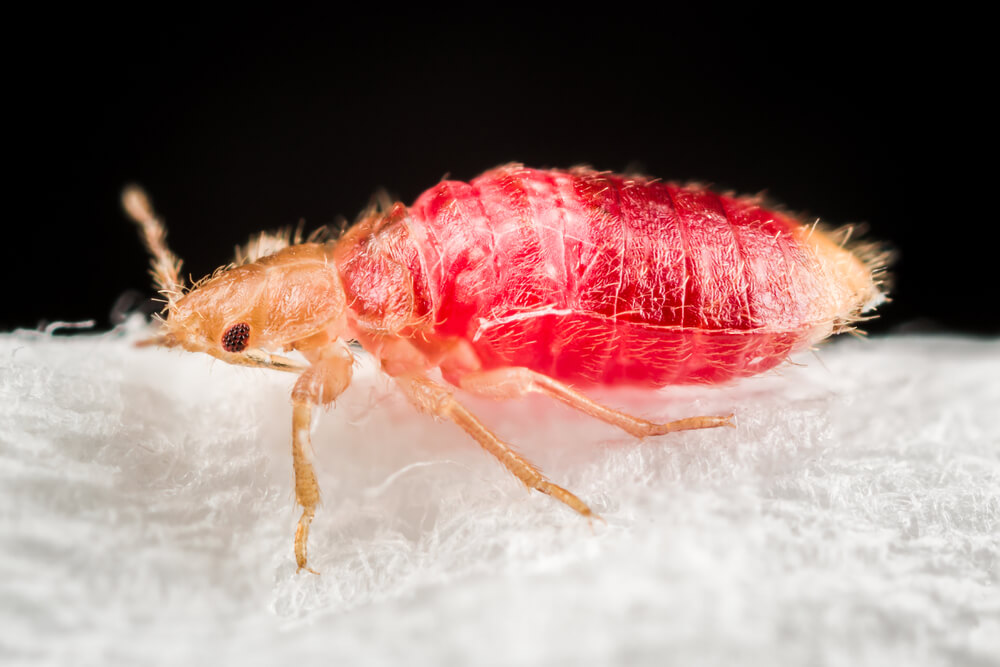
How Big Are Bed Bugs?
The common bed bugs that you are likely to find in your home have five developmental stages in its life. Like many other insects, bed bugs have an exoskeleton which they have to shed in order to grow larger.
Bed bugs eggs are about the size of a poppy seed, younger bed bugs are the same size as a sesame seed. An adult bed bug that hasn’t fed recently is similar in size to a flaxseed, while an engorged bed bug expands to be the size of an apple seed.
Do Bed Bugs Live On People?
No, bed bugs only ever move onto humans to feed. However, they do often rely on humans to travel great distances and will often crawl onto our belongings to hitch a ride. They will hide out on backpacks, luggage, car seats and clothes to travel from place to place.
In addition, bed bugs prefer to feed on exposed areas of skin, because they lack the grasping legs of insects like lice that make their homes in hair. This also helps explain why bed bugs prefer to feed on human hosts, compared to other animals.
How Do Bed Bugs Bite Us?
Bed bugs have mouthparts that they use to probe our skin. They may poke our skin several times before finding a capillary space that will allow blood to flow quickly into their bodies. This means you can receive several bites from a single bed bug.
Once a bed bug has found a suitable spot, they will feed for between five and ten minutes until they are full. They will then return to their harborage with the rest of the bed bugs. While bed bugs do gather in clusters and groups, they are not like bees or ants and don’t perform social tasks together. In addition, they do not come out to feed together as a group.
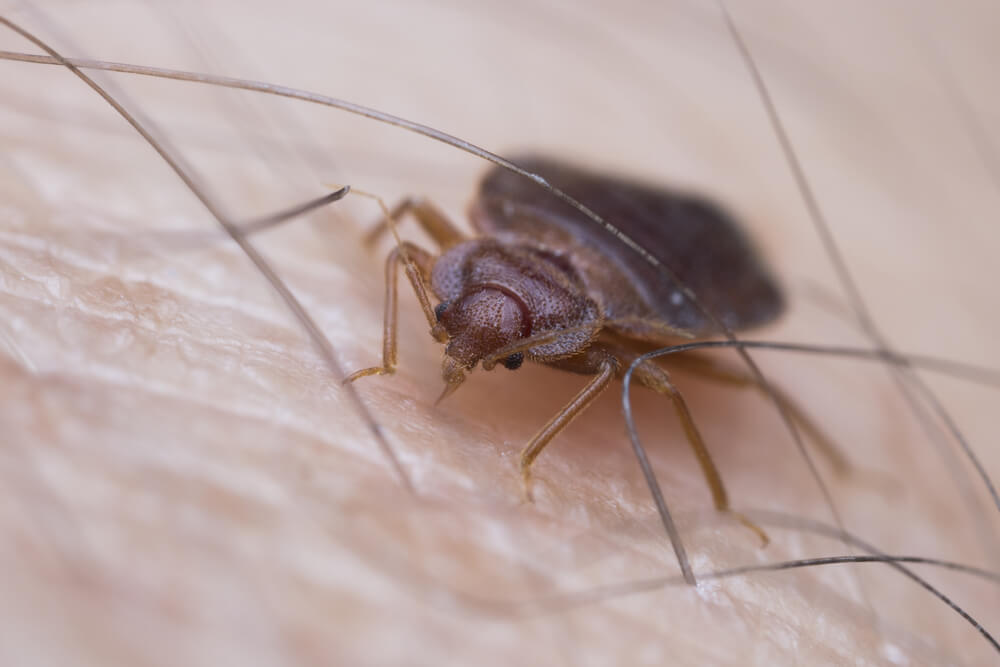
When Are Bed Bugs Active?
Bed bugs are cryptic and spend most of the day hiding in the cracks and crevices of your bed with other bed bugs in communities called harborages. However, once the night begins, hungry bed bugs will become active and will look for food. The timing is great for bed bugs, as that is when most people are asleep in bed. Bed bugs will usually be active between midnight and 5 am.
How Do Bed Bugs Find Us At Night?
Bed Bugs are able to detect carbon dioxide, which alerts them to the presence of food. Unfortunately, we emit carbon dioxide, which lets the bed bugs know that we are in the room. In addition, bed bugs are able to use the heat signature from our bodies to find us. However, they have to be within close proximity to sense us, usually, five to 20 feet from their harborage.
Why Do Some Bed Bugs Have A Black Spot On Them?
The black spot that you can see on some bed bugs is digested blood that the bed bug fed a few days before. Bed bugs don’t feed every day and spend the time in between feeds in a digestive state. They will excrete the digested blood later, which can be seen as dark spots in your bedding or in cracks of furniture.
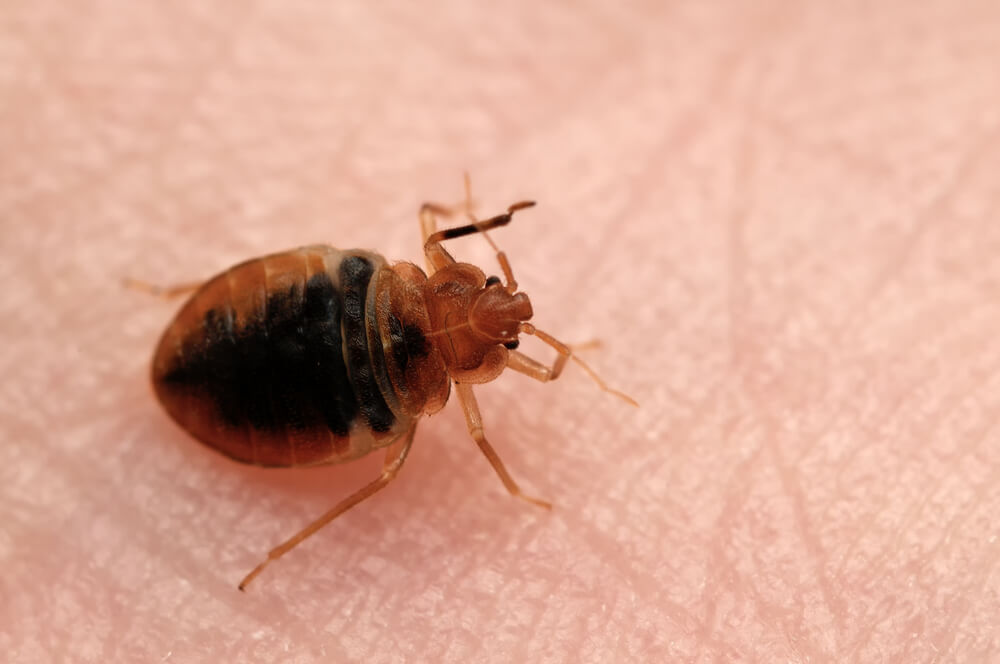
What Do Bed Bug Eggs Look Like?
Once a female bed bug has fed, she will be ready to lay some eggs. Bed bugs can lay one to seven eggs per day, over a ten-day period. She will then need to feed again before she can produce more eggs.
Bed bug eggs are clear and tubular, similar in shape to a jelly bean. They are tiny, the size of a speck of dust. Up 97% of bed bug eggs will hatch under optimal conditions, which is why infestations can get out of hand easily.
Where Do Bed Bugs Lay Eggs?
Female bed bugs can lay their eggs either singly or in groups depending on how many they lay at once. Bed bugs prefer quieter places to lay low during the day and to lay their eggs. Bed bugs won’t ever lay eggs on your body but can lay them pretty much anywhere in your room. Bed bug eggs are sticky when they are laid, and will attach to the surface of furniture.
How Long Does It Take For Bed Bug Eggs To Hatch?
Bed bug eggs can take between six and nine days to hatch in optimal conditions. Hatching time can take longer if the temperature is lower. However, if conditions are ideal, a bed bug population can double every 16 days.
To stop the spread of bed bugs in your home or commercial business, call on your North England bed bug extermination service on 01904 798676 or use the contact form at the end of this page.
What Do Bed Bugs Look Like When They Are Born?
Similar to eggs, newborn bed bugs are very hard to see with the naked eye. They are about the size of a pinhead and are translucent with red eyes. However, it won’t take long for them to go through all five nymphal stages and become a reproductive adult.
Newborn bed bugs need to get their first meal within 20 days and, assuming they aren’t crushed or killed, will become fully-fledged adults in around 37 days.
Where Do Bed Bugs Live?
Bed bugs like to stay discreet so will gravitate towards places that humans don’t notice on a regular basis. Places like the seams of furniture, the edge of curtains, behind wall-mounted fixtures, cracks in bed frames and piles of clothes are all common places for bed bugs to live.
Staying out of sight isn’t a bed bug’s only motivation to choose these places. By packing themselves tightly into cracks they can maintain a microhabitat with a favourable temperature and humidity, which helps them and their eggs survive.
Stop them living in your living spaces with effective bed bug extermination by VermEx.
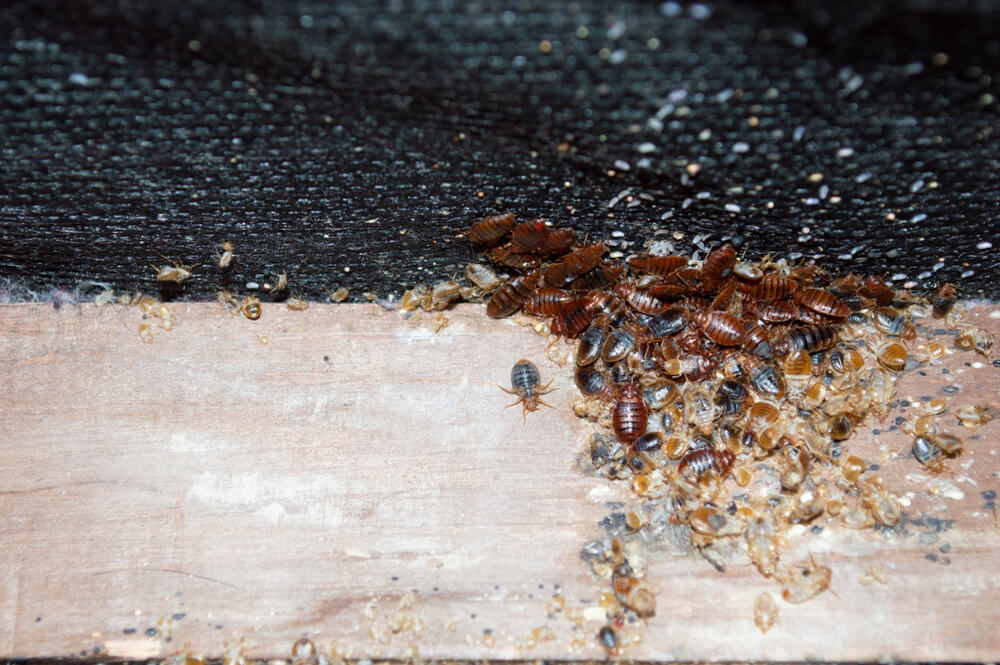
What Causes Bed Bugs?
Bed bugs only have one source of food, blood. Common bed bugs need to feed on blood to both live and breed, which is why they make their homes in our homes. Once they have found their way into our home, usually by hitching a ride on us or our belongings, they find a place where humans sleep at night. They then hide and wait until it is time to feed.
Do Bed Bugs Fly?
Bed bugs can’t fly or jump like fleas, nor can they move as fast as cockroaches. They can move about your home at a reasonable speed, however. This means it can hunt out a human host fairly quickly. Even if it doesn’t find a blood source right away, bed bugs can survive for months without a meal before dying of dehydration.
How Far Can Bed Bugs Crawl?
While they can’t fly or jump, bed bugs are champion crawlers and move quickly. For example, over the course of a night, a bed bug can crawl along a long hallway, meaning they don’t necessarily have to be living in your bedroom for them to feed on you.
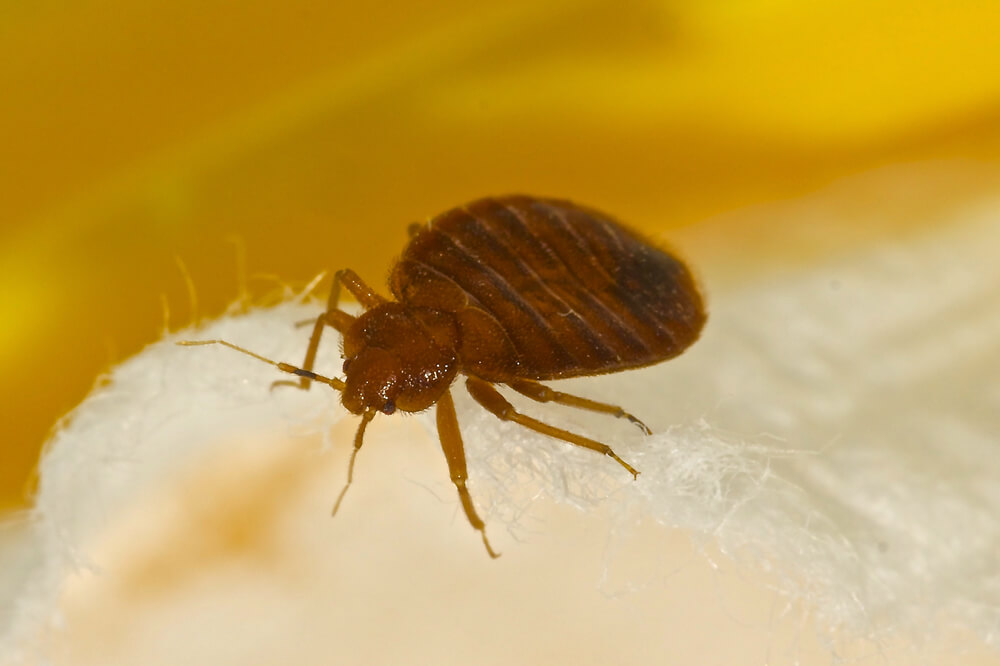
Fast & Effective Pest Control
If you are worried that you might have a bed bug infestation in your home or business, then get in touch with the pest control experts here at VermEx. We can provide expert advice and a fast and reliable pest control service to rid your home of pests like bed bugs.
Get in touch with our expert pest control team by phone on 01904 798676
, by emailing info@vermex.co.uk or by using our contact form to discuss your pest control problems and to receive a free, no-obligation quote for any work that is required.
